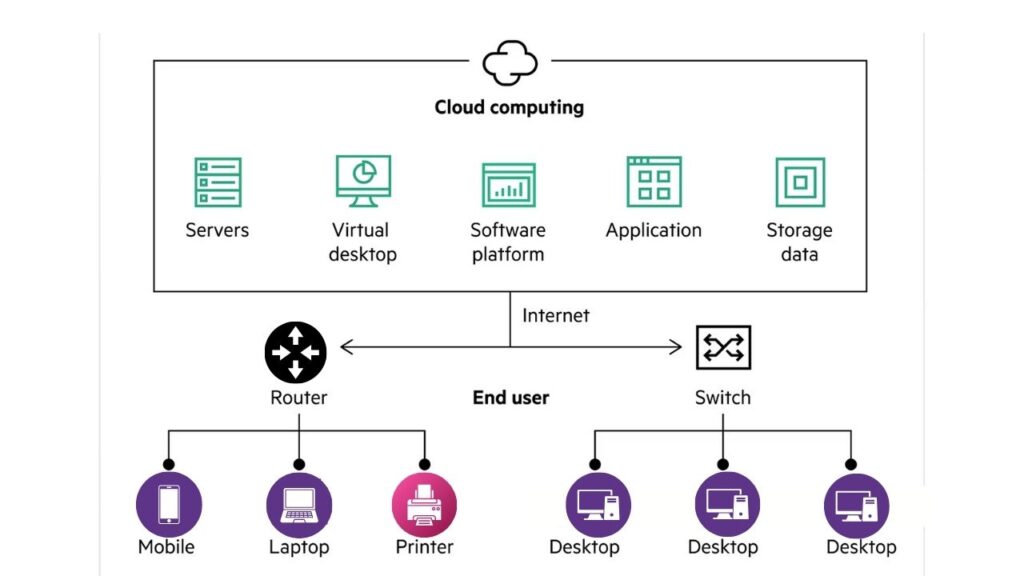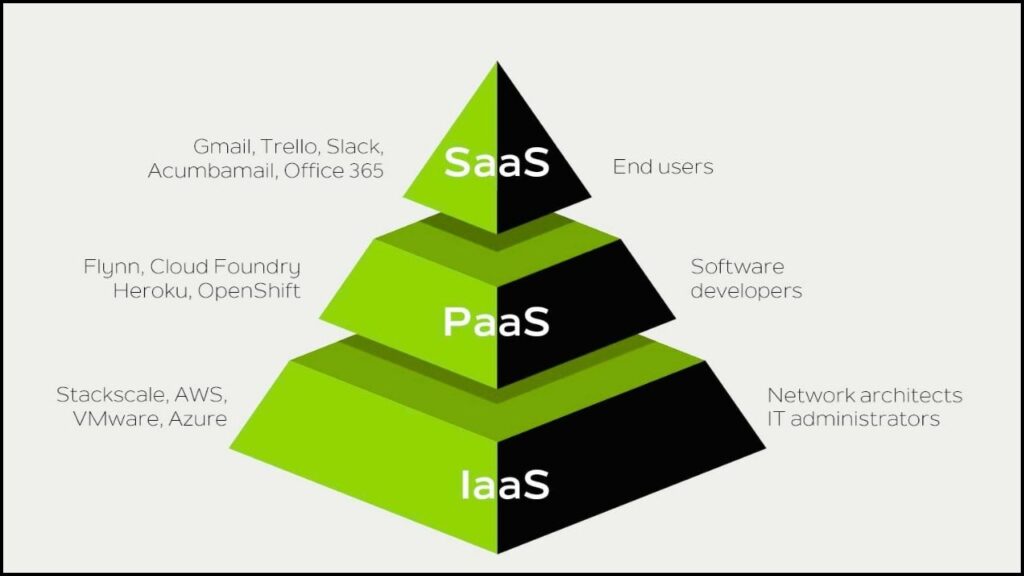Iran Plans to Onboard Multiple Cloud Providers to Support Government Infrastructure—this initiative marks a transformative step in Iran’s digital journey. As the government moves to modernize its public sector, the adoption of cloud technology is set to play a central role in ensuring secure, efficient, and innovative services for citizens and businesses alike.

In this in-depth article, we’ll explore the context, the process, and the real-world impact of Iran’s multi-cloud strategy, providing valuable insights for professionals, policymakers, and anyone interested in the future of technology in Iran.
Table of Contents
Iran Plans to Onboard Multiple Cloud Providers to Support Government Infrastructure
| Aspect | Details |
|---|---|
| Number of cloud companies in Iran | About 250 local providers |
| Main cloud models | Public, Private, Hybrid |
| Government goals | Onboard at least 3 certified providers for IaaS, PaaS, SaaS; improve resilience and reduce vendor lock-in |
| Market growth | Over 80% of Iranian organizations expected to use cloud by 2025 |
| Security standards | ISO 27017, ISO 27018, NIST SP 800-145 |
| Leading local providers | Afranet, ArvanCloud, PersianGig, Pars Online Cloud |
| Official website | Information Technology Organization of Iran |
Iran’s plan to onboard multiple cloud providers for government infrastructure is a forward-thinking move that will strengthen national resilience, security, and innovation. By fostering a competitive local cloud market and adhering to international standards, Iran is setting the stage for a robust, flexible, and secure digital future. This approach not only benefits government operations but also opens new opportunities for businesses, professionals, and entrepreneurs across the country.
What Is Cloud Computing and Why Is It Important for Iran?
Cloud computing allows organizations to store, manage, and process data on remote servers accessed via the internet, rather than on local computers or physical servers. Imagine having a powerful, invisible computer that you can use anytime, anywhere, without worrying about maintenance or upgrades. This technology is revolutionizing how governments deliver services, making them faster, more reliable, and more secure.

For Iran, the move to cloud computing is about more than technology. It’s a strategic decision to:
- Improve reliability of public services, reducing downtime and ensuring continuity even during crises.
- Enhance cybersecurity by centralizing data protection and monitoring.
- Lower costs by eliminating the need for expensive hardware and maintenance in every government office.
- Foster innovation by making it easier to launch new digital services and applications.
Why Is Iran Choosing Multiple Cloud Providers?
Relying on a single cloud provider can be risky. If that provider experiences technical issues, security breaches, or policy changes, it could disrupt essential government services. By onboarding multiple cloud providers, Iran aims to:
- Increase resilience: If one provider fails, others can keep services running.
- Avoid vendor lock-in: The government can switch providers or use several at once for different needs.
- Encourage competition: Providers will strive to offer better prices and services.
- Support local industry: Most providers will be Iranian, strengthening the national tech sector.
The Current State of Cloud Computing in Iran
Market Overview
Iran’s cloud computing market has grown rapidly in recent years. There are now about 250 local companies offering cloud services, ranging from small startups to established technology firms. The government’s focus is on:
- Private cloud: Preferred for sensitive data and critical government applications.
- Public cloud: Used for less sensitive, high-availability services.
- Hybrid cloud: Combines both private and public cloud to maximize flexibility and security.
By 2025, it’s expected that over 80% of Iranian organizations will be using some form of cloud infrastructure. This growth is driven by the need for modernization, efficiency, and the increasing complexity of digital services.
Key Players in the Iranian Cloud Market
Some of the most prominent local cloud providers include:
- Afranet: Offers comprehensive cloud solutions for businesses and government agencies.
- ArvanCloud: Known for its robust infrastructure, high security, and scalable services.
- PersianGig: Specializes in cloud storage and file-sharing platforms.
- Pars Online Cloud: Provides virtual private cloud, VPS, and data center services.
These companies are leading the charge in providing secure, reliable, and scalable cloud services tailored to Iran’s unique regulatory and operational environment.
How Iran Is Certifying Cloud Providers for Government Use
The Evaluation and Certification Process
The Information Technology Organization of Iran (ITOI) is responsible for evaluating and certifying cloud providers that wish to serve the government. The process is designed to ensure that only the most secure and capable providers are entrusted with sensitive public sector data.
Steps in the Certification Process
- Application: Cloud providers submit detailed information about their services, infrastructure, and security measures.
- Compliance Assessment: Providers are evaluated against international standards, including:
- ISO 27017: Security controls for cloud services.
- ISO 27018: Protection of personally identifiable information.
- NIST SP 800-145: Definition and best practices for cloud computing.
- Service Capability Review: The government looks for providers that can deliver:
- Infrastructure as a Service (IaaS): Basic computing, storage, and networking resources.
- Platform as a Service (PaaS): Tools for developers to build and deploy applications.
- Software as a Service (SaaS): Ready-to-use applications for government employees and citizens.
- Specialized Services: Providers offering security, monitoring, technical support, and migration assistance are given special consideration.
- Grading and Ranking: Providers are graded and ranked based on their compliance, capabilities, and reliability.
- Certification: Qualified providers receive a “cloud service rating certificate,” making them eligible for inclusion on the government’s official list of authorized cloud service providers.

Why These Standards Matter
International standards like ISO 27017, ISO 27018, and NIST SP 800-145 are recognized benchmarks for cloud security and data protection. By requiring compliance with these standards, Iran is ensuring that its cloud infrastructure meets global best practices, even as it develops a uniquely national approach.
The Broader Context: Cloud Adoption in Developing Countries
Adopting cloud computing in a developing country like Iran comes with unique challenges and opportunities. On one hand, cloud technology can help leapfrog traditional infrastructure, enabling rapid modernization and cost savings. On the other, there are hurdles such as:
- Limited access to global providers due to sanctions and regulatory barriers.
- Need for robust local expertise in cloud management and cybersecurity.
- Concerns about data sovereignty and control over sensitive information.
Iran’s approach—focusing on local providers, strict certification, and international standards—offers a model for other developing countries seeking to balance modernization with national security and regulatory needs.
Real-World Examples: Cloud in Action in Iran
National Library and Archives
The National Library and Archives of Iran has adopted cloud solutions to manage its vast digital collections. By partnering with local cloud providers, the library ensures secure, scalable access to millions of documents and historical records for researchers, students, and the public.
E-Government Services
Iran’s government is rolling out a range of e-government services on cloud platforms, from tax filing to business registration and healthcare. This shift is making it easier for citizens to access essential services online, reducing paperwork and wait times.
Business Innovation
Iranian startups and tech companies are leveraging cloud platforms to develop new apps, launch e-commerce platforms, and offer digital services. The cloud’s flexibility allows them to scale quickly and compete in a rapidly evolving market.
Practical Advice: How Organizations Can Prepare for Cloud Adoption
For IT Professionals
- Develop expertise in cloud platforms such as OpenStack, VMware, and local Iranian solutions.
- Gain certifications in cloud security and data protection standards (ISO 27017, ISO 27018).
- Stay informed about government-approved providers and evolving regulations.
For Businesses
- Choose certified cloud providers to ensure compliance and reliability.
- Consider hybrid cloud models for maximum flexibility and security.
- Plan for data migration with support from experienced providers.
For Entrepreneurs and Startups
- Explore opportunities in SaaS, cybersecurity, and cloud consulting.
- Partner with certified providers to access government contracts and larger clients.
- Innovate with cloud-native applications to meet the growing demand for digital services.
Step-by-Step Guide: Adopting Cloud in Iran
- Assess Organizational Needs: Identify which services and data are suitable for cloud migration.
- Research Certified Providers: Use the government’s official list to find trusted vendors.
- Develop a Migration Plan: Work with your chosen provider to map out the transition.
- Implement Security Protocols: Ensure compliance with required standards.
- Train Your Team: Invest in cloud skills development for IT staff and end-users.
- Monitor and Optimize: Use cloud monitoring tools to track performance, usage, and costs.
Ooredoo and NVIDIA Unite to Build Qatar’s Supercharged AI Future
FAQs About Iran Plans to Onboard Multiple Cloud
Q: Why is Iran focusing on local cloud providers?
A: Due to international sanctions and data sovereignty concerns, local providers ensure compliance, security, and control over sensitive national data.
Q: What are the benefits of using multiple cloud providers?
A: Multiple providers increase resilience, reduce risk of downtime, encourage competition, and offer flexibility in service options.
Q: Are Iranian cloud providers secure?
A: Certified providers must comply with international security standards, providing robust protection for government and business data.
Q: Can foreign companies participate in Iran’s government cloud projects?
A: Participation is limited due to sanctions and regulatory barriers, so most contracts go to domestic firms.
Q: What types of cloud services are most in demand?
A: Infrastructure as a Service (IaaS), Platform as a Service (PaaS), and Software as a Service (SaaS), with a strong focus on private and hybrid cloud models.



















